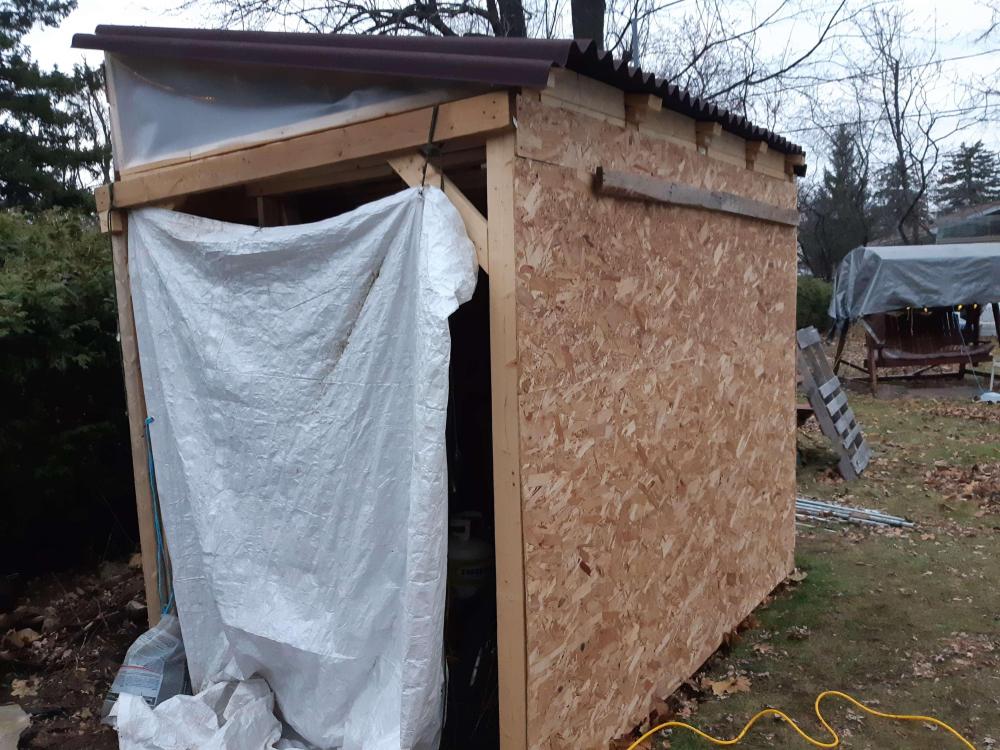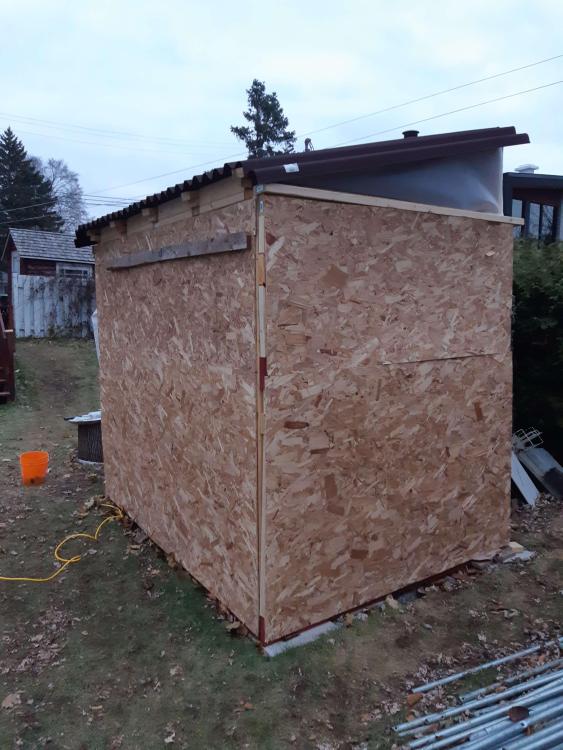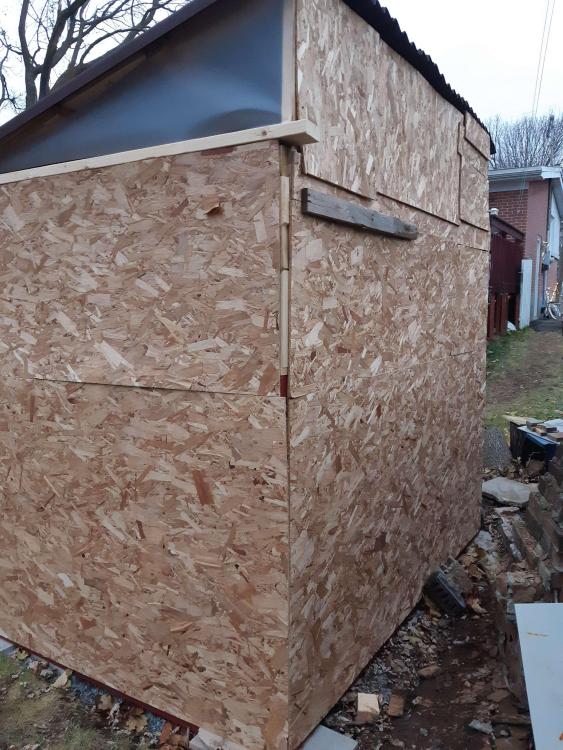
Thr
Members-
Posts
10 -
Joined
-
Last visited
Profile Information
-
Location
Montreal, Canada
Recent Profile Visitors
97 profile views
-
Setting up a temporary shelter in a backyard?
Thr replied to Thr's topic in Building, Designing a Shop
After many months and recovering from a bunch of unrelated injuries later... I finally have this. It isn't perfect, but it'll keep the elements off of my equipment for the winter and let me actually use a belt grinder without too much issue. -
Setting up a temporary shelter in a backyard?
Thr replied to Thr's topic in Building, Designing a Shop
Thanks for all the info! I've been using a trick I saw elsewhere to disassemble pallets, by using one plank on the ground to rest the pallet on to angle part of it just off the ground, and another to bash the lower planks from the top side so they're forced out. While I'll be using screws for the actual frame, would regular nails be strong enough to hold planks onto the frame itself to form walls and possibly a roof? -
Setting up a temporary shelter in a backyard?
Thr replied to Thr's topic in Building, Designing a Shop
I'm planning to put in a layer of gravel, actually, possibly with a few tiles on top within. The frame itself is made of new wood rather than old pallet wood... I can't really do much in the realm of good carpentry due to having nothing more than a few hand tools and basically no workspace or proper workbench, I'm doing this on an extreme shoestring budget. I've looked around a few places for building techniques, but would you know where I could find some resources on it? -
Setting up a temporary shelter in a backyard?
Thr replied to Thr's topic in Building, Designing a Shop
Apologies for disappearing for the better part of a year. Craziness in life and back pain kept me from doing much for quite a while, but I'm setting up something slightly more permanent now. I'm going to nail/screw these together and create two roughly square frames, with an extra set of connecting beams across the top. Then, I'll add in some extra supports, and leave the two sides on the short ends partly open, to eventually be filled in with some kind of hinged door (The overall area is 6' x 8') and I'll put together a basic roof, sloped at 45 degrees, with the actual roof covering being a simple sheet metal, and the walls will be made of pallet wood nailed on. Is there anything else I should consider? -
Hello, I live up north where the winters are quite harsh, and in order to keep working through the winter, I've been looking to make an improvised shelter out of wooden pallets for now, eventually working towards a better setup later on. What would I need to consider, if working with only pallet wood? I plan to dig small holes in the ground to bury beams for support, nailing wooden pallets to a basic frame. Thanks.
-
I know I was extremely late to the party again, but I managed to take it off with little effort -- I guess I had to find out the hard way that HT100 isn't a proper refractory, but moreso just a coating. I made another amateur mistake -- I didn't have a spare spray bottle around, so I simply dunked the wool blanket in a bucket of the mixed rigidizer I prepared. Only the edges got really soaked as a result; would I need to worry about completely coating the blanket with rigidizer, or can I get by without, as long as I'm careful with the refractory coating?
-
Apologies for disappearing for a month, I came down with a bad case of a certain disease and am still recovering from it -- I've been unable to do much of anything as a result. Thanks so much for all your advice, I'll be going through more of it later when I'm feeling better. Since I'll have to redo the lining, are there any recommended methods for removing the lining from a forge? Thanks!
-
I've still got the bags of satanite somewhere... I'm not happy about paying more since I'm stuck on a pretty serious budget, but I'm not certain if it's safe to have different refractories on top of one another
-
I tried using borax a couple of times to reduce forge scale, but if I'd known it'd have done this, I wouldn't have bothered. There's no way to remove it? I'm thinking of going in with a chisel to take it out, then patching it over with fresh cement. Alternatively, I might as well redo the whole thing, because I'm not certain I covered it with enough cement in the first place. It is a Mr. Volcano, albeit I used HT100 refractory cement instead of the regular satanite provided -- I've gone for some more expensive materials after doing some reading up. I live up in Canada, and it seems that most rigidizers and refractories will crack due to temperature changes in wintertime. And, what is a kiln wash?
-
After over a decade of obsessing over most everything related to smithing, I finally managed to get myself a forge and anvil in recent months, and have been practicing with what scrap metal I can get. After a couple months of things going well, I've discovered this: That large black spot at the bottom feels like glass, and seems to have somehow melted through the cement coating -- for reference, I'm using HT100 refractory cement. Can I patch this over with fresh cement, or do I have to replace the entire thing? Thanks.




